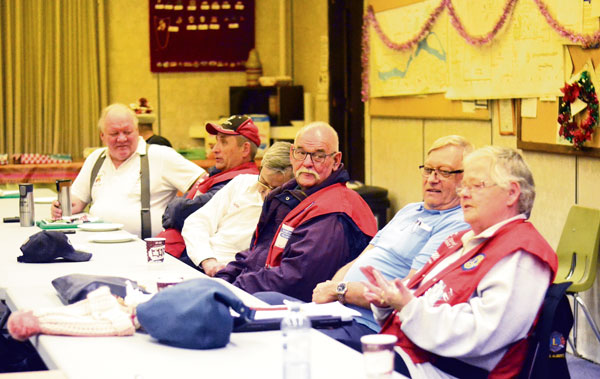
It’s just after midnight on Jan. 1. I feel a subtle buzz from my cellphone in my pocket. I open the new text message and within minutes I’m on the road, ready to help drive someone home on one of the worst nights of the year for impaired driving.
To kick off my New Year’s Day, I’m with Operation Red Nose.
The national safety campaign, which started in Quebec in 1984, aims to reduce impaired driving over the holidays. SGI sponsors the initiative in Saskatchewan, where volunteers in Prince Albert, Saskatoon, Yorkton and the Battlefords dedicate several sleepless nights to driving people home in the comfort of their own vehicles.
The Battlefords were the first to adopt the program in the province 11 years ago.
Prince Albert’s Operation Red Nose, which is run by the Lions Club, joined 10 years ago. Often a group of people will volunteer together for a night, such as the Prince Albert Shriners and the Aboriginal Policing Preparation students at Saskatchewan Polytechnic.
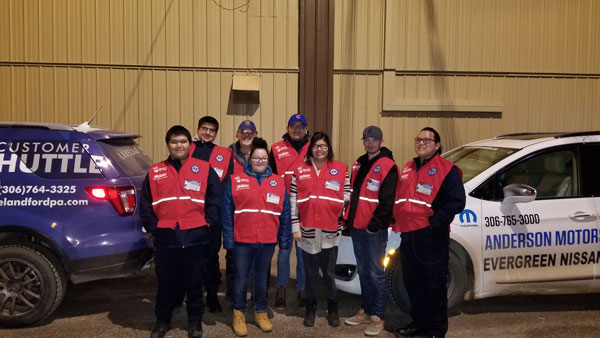
I was asked to come to the Lions Clubhouse on the Exhibition grounds at 10:30 p.m. As Lion Randy Braaten told me, New Years Eve is fairly quiet until after midnight, and then the calls don’t stop coming—I later found out he wasn’t exaggerating.
I’m not entirely sure what I was expecting, but I was somewhat surprised when I walked into the spacious room to see so many people in bright red vests lining the tables. I instantly feel welcome as Braaten introduces me to every person there, each of whom says hello with a warm smile.
There’s a table filled with pizza and baked goods, which were donated to keep everyone’s stomachs full as they worked throughout the night.
Dispatcher John Alexandersen takes my name and phone number and enters it into the computer system. That way, I’m able to receive texts with all the information we need before heading out on a call, including the client’s name, phone number, numbers of passengers, type of vehicle and pickup and destination addresses.
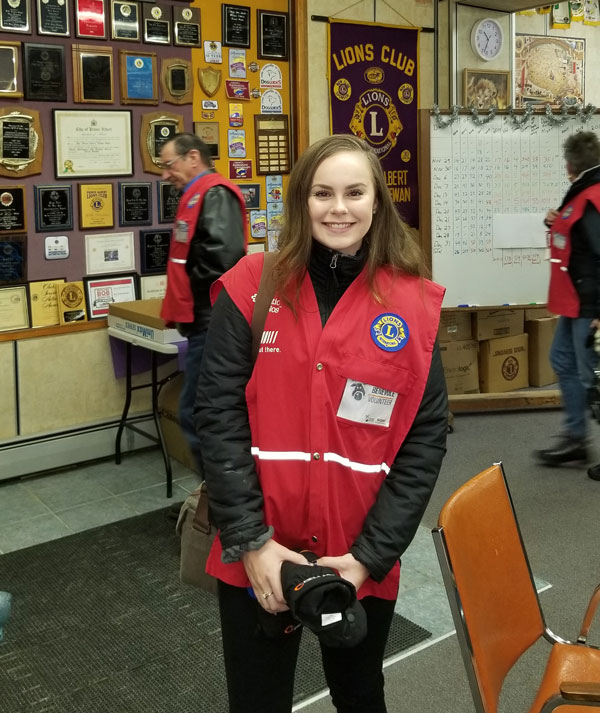
Braaten helps me put on an Operation Red Nose vest over my jacket. It’s a pleasant winter night, with the temperature lingering in the minus single digits. It’s a lot warmer than last year, members tells me, when the temperature felt like -40 C.
Within 10 minutes of arriving, I’m headed out on an early call as the third member of team two. I’m with Luc Fournier, who drives the escort vehicle provided by Lakeland Hyundai. Bev Whitford is set to drive clients in their own vehicles.
We go to Olive Diefenbaker Drive for a pickup at 10:45 p.m. When we arrive, Whitford texts the client so she knows we’re there, but receives no answer.
A minute or two flies by and I see someone pull back the curtains in the house, peeking through the window. The client’s Ford Escape in the driveway isn’t running.
The woman then comes out of the house, her dark brown hair pulled back neatly in a bun. Whitford greets her, hops in her vehicle and Fournier and I follow them to the woman’s destination. Whitford takes the donation and stores the cash in a zippered compartment underneath her clipboard. She records the amount underneath the call, and texts ‘clear’ to Alexandersen.
We drive back to the clubhouse, where I talk with some of the other volunteers before midnight hits.
Braaten has been volunteering with Operation Red Nose for the past seven years.
“The most satisfying part is getting people home safe to their families,” he emphasizes. “The secondary thing is it’s nice to get the donations.”
He says the mandate of Operation Red Nose is to donate the money to youth programs. The Prince Albert Lions Club decided to donate to local elementary schools.
Last year, says Braaten, $8,000 was dispersed across 10 different schools.
“Some people, they don’t donate anything, but I look at it this way: They got home safe themselves and they didn’t hurt anybody else trying to get home,” he says, and every volunteer I speak to seems to have the same mindset.
This is only Bob Cooke’s second or third night as an Operation Red Nose volunteer, but I can sense he’s already dedicated to the cause.
“I’ve done my share of drinking and driving and I’m not proud of it, but that was a lot of years ago when cars were cars, you could bump into something and it didn’t hurt nothing,” he tells me.
“I’ve been lucky.”
SGI statistics released this past October show a total of 739 collisions involving an impaired driver in 2018. Of those accidents, 39 were fatal and 201 resulted in injuries.
I’m sitting with Cooke when everyone in the room starts counting down at the 10-second mark before midnight. They yell ‘happy new year,’ and joke about how the night is just getting started.
The phone starts ringing and ringing.
“Operation Red Nose, how can I help you?” answers Alexandersen. Team two is up, and this is where things start getting interesting. My eyes suddenly don’t feel heavy anymore as I step outside and into the escort vehicle with Fournier and Whitford.
At 12:05 a.m., we’re driving to the Union Centre to pick up a young woman who’s already waiting outside, visiting with a group on a smoke break. Whitford asks if she’s able to give her directions to her home, which is located just outside of the city.
She replies with “Yes. I’ve only had four drinks, but four drinks is enough not to drive.”
Fournier slowly starts pulling forward to follow Whitford in the client’s small black car when a man darts in front of the vehicle, his lips holding an unlit cigarette.
Fournier rolls down the window and the man shakes his hand, telling him thank you. He sees me sitting in the back seat and points at me to thank me, too.
In this call and the next few, I witness many genuine thank yous for the service. I can only imagine this keeps the volunteers motivated to continue in the early hours of the morning.
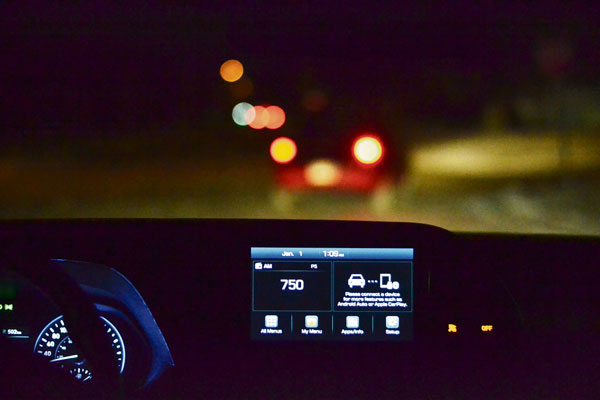
At 1:15 a.m. on the dot, we’re dispatched to a home in Peter Pond off of Highway 3.
Whitford enters the address into Google Maps, which gives her a location in the United States. I do the same, and discover the street we’re looking for doesn’t exist. It takes two phone calls to the client before we realize the original address was completely wrong.
The white house twinkles in colourful Christmas lights. We’re parked on the opposite side of the road next to the trees when two young girls hesitantly walk towards the vehicle. They jump in the back, both of them sitting to my right. They say we’re waiting for another person, who’s the mother of one of the girls.
“Why do we have three kids?” the mother asks. I’m trying not to laugh too hard as Fournier tells her I’m with Operation Red Nose. She apologizes, and on the ride back to Prince Albert the two girls say they’re in grades eight and nine.
I’ll take it as a compliment.
I’m surprised we get back to the clubhouse after going on a few calls back to back. It’s after 2 a.m. and Fournier and Whitford turn right around on another one. I decide to hang back and learn more about how the teams are dispatched.
This means getting an insight into the work of Alexandersen and Marc Roberts.
Roberts is glued to Alexandersen’s personal cellphone, where he’s either communicating with the drivers on information that’s unclear or returning missed phone calls from clients. He’s also in charge of updating the white board, which lists the members of each team and where they were last dispatched.
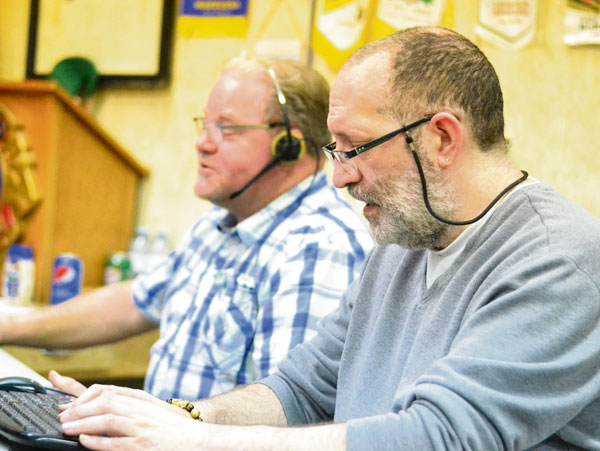
The pair always asks if they have their vehicles with them when taking calls. If the answer is no, they refer them to a taxi because they don’t want to compete with their services.
In one of the calls Roberts receives, a client wants to fit six people into a Dodge Dart. He tells them it’s not going to happen.
Alexandersen tells me he designed the software himself, which Operation Red Nose in Prince Albert has been using since 2013.
“It was just something I put together realizing that delivering it by phone messages just wasn’t cutting it. It was taking a lot of time,” he explains to me. Previously, they had three or four people in the clubroom relaying the information to the drivers entirely through phone calls.
“You’re not fighting with paper. You’re not fighting with flashlights. To me, it seems a lot easier than the way we were doing it the very first year.”
Alexandersen says he’s an avid volunteer in Prince Albert. With little going on during the holiday season, he’s dedicated his time to helping Operation Red Nose since its second year.
“Going back to high school years, I was always DD (designated driver). I was never worried about consumption. I was always the guy that made sure everybody got home, so it was kind of a continuation of that. I think there’s a need for it,” he said.
“We take home as many as we can. If we had more volunteers, we could definitely do more, but the support of the volunteers that come out, the support of the media for the advertising, that’s what makes it work. I mean we’ve got our corporate sponsors, we’ve got our media sponsors, the food that we get from all the vendors, the dealerships that provide us the vehicles.”
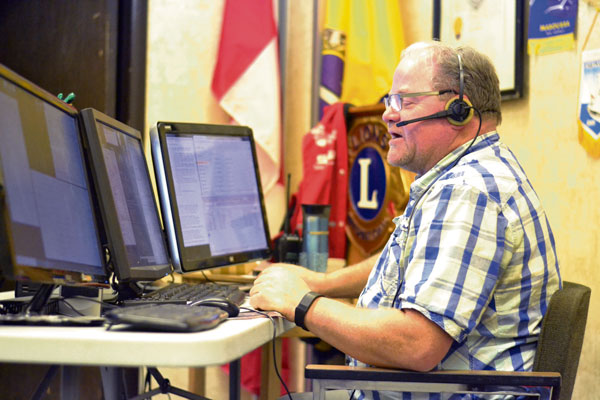
In 2018, Operation Red Nose in Prince Albert had a total of 178 volunteers who delivered 779 people. The statistics for this year aren’t available yet.
I leave at about 3 a.m., and I can’t help but put myself in the shoes of volunteers like Braaten, Fournier and Alexandersen. They’re leaving at this time or later on Fridays and Saturdays over the holiday season.
I think about the five calls I went on for New Year’s, picking up a total of 10 people—10 people who, if Operation Red Nose didn’t exist, could have faced consequences beyond a Criminal Code charge for driving impaired.
I’m 22 years old. A lot of people my age are toasting champagne at house parties and bars at midnight on New Year’s Day, taking the chances of driving impaired when all it takes is a simple phone call to get home safe.
The people behind Operation Red Nose, along with other initiatives like Wing in the New Year, are helping save lives.
Operation Red Nose also spreads a message we all need to engrain in our minds: Go out and have fun, but remember what’s most important—not just your life, but the lives of your friends, family and strangers you could harm because of an easily preventable mistake.

